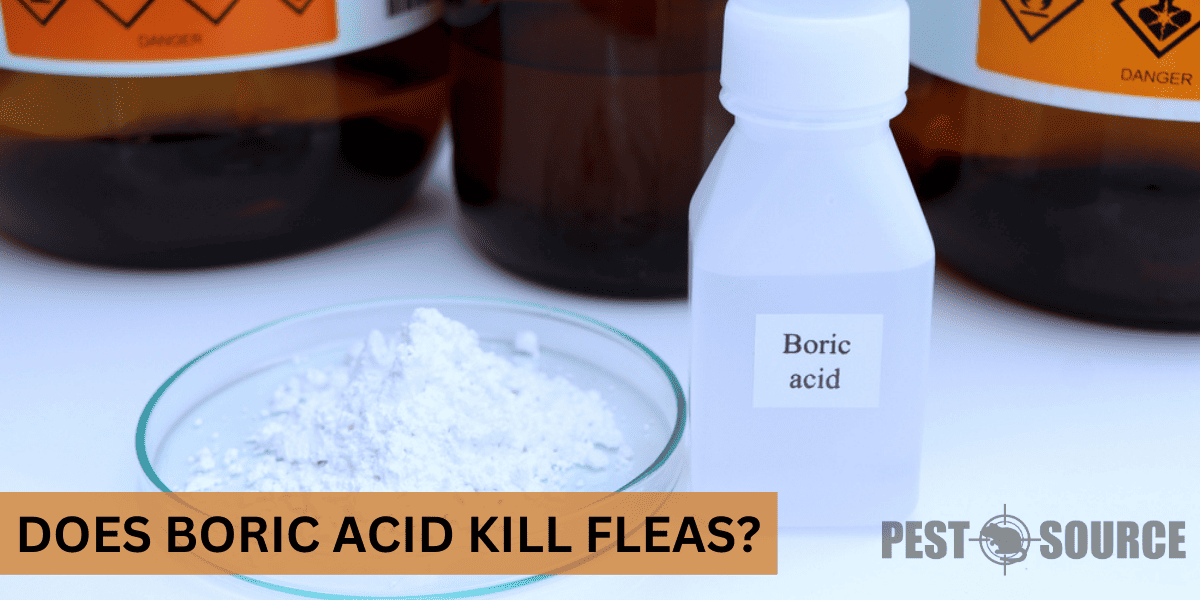Are you dealing with a pesky flea infestation in your home and searching for an effective solution? You might have come across boric acid as a potential remedy, but is it safe and effective for flea control?
In this comprehensive guide, we explore the use of boric acid as a flea treatment, its efficacy, and safety concerns for both pets and humans. Armed with this information, you’ll be able to make an informed decision about using boric acid to rid your home of fleas while ensuring the continued well-being of your furry companions.
POINTS
- Boric acid is an effective flea control agent that works by damaging the flea’s exoskeleton and disrupting its digestive system, leading to dehydration and starvation.
- Proper application of boric acid for flea control involves dusting a thin layer on affected areas such as carpets, pet bedding, and baseboards, leaving it for 24-48 hours, and then vacuuming or wiping up the excess.
- Applying boric acid directly on pets is not recommended, as it may cause skin irritation or gastrointestinal issues if ingested during self-grooming. Opt for vet-approved flea treatments designed for pets.
- Boric acid is generally considered safe for pets and humans when used correctly, following proper precautions. However, excessive ingestion or chronic exposure can pose health risks.
- Always follow safety guidelines while using boric acid, including applying a thin layer, keeping pets away from treated areas, monitoring pets for signs of toxicity, and storing boric acid containers out of reach.
Boric Acid and its Role in Pest Control
What is boric acid?
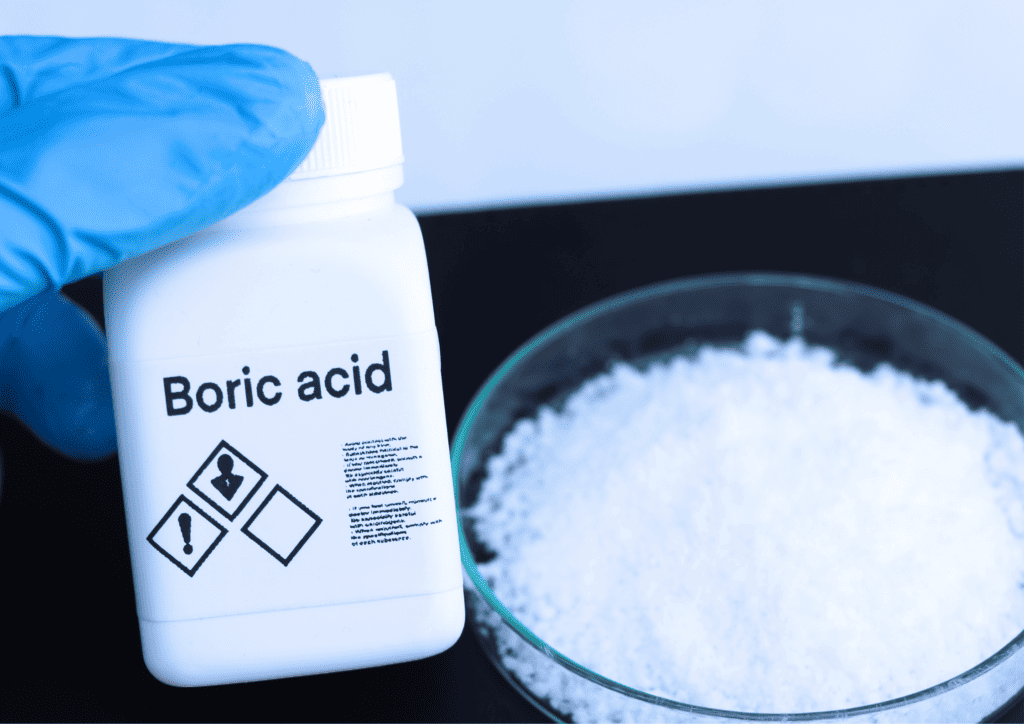
Boric acid is an inorganic compound and a naturally occurring mineral that is derived from boron, an essential element found in the earth’s crust. It has a white, crystalline powder appearance and is odorless and non-flammable. Boric acid is commonly used in various household and industrial applications, including as a pH buffer, eye wash solution, and as an ingredient in flame retardants. One notable application of boric acid is its role in flea control as an insecticide.
How does boric acid function as an insecticide?

Boric acid functions as an insecticide by acting as a stomach poison and desiccant that dries out the insects’ bodies. The fine powdered particles cling to the insect’s exoskeleton and, when ingested through self-grooming, cause internal damage to its digestive system. This results in the insect’s eventual death due to starvation and dehydration. Boric acid is effective against various pests, including ants, cockroaches, and termites, making it a popular choice for pest control.
The Efficacy of Boric Acid Against Fleas
Does boric acid kill fleas?
Yes, boric acid is an effective agent in killing fleas. It works against fleas in the same way it functions as an insecticide for other pests. When the fine powder comes into contact with the flea’s exoskeleton and is ingested during self-grooming, it causes internal damage and dehydration, eventually leading to the flea’s death.
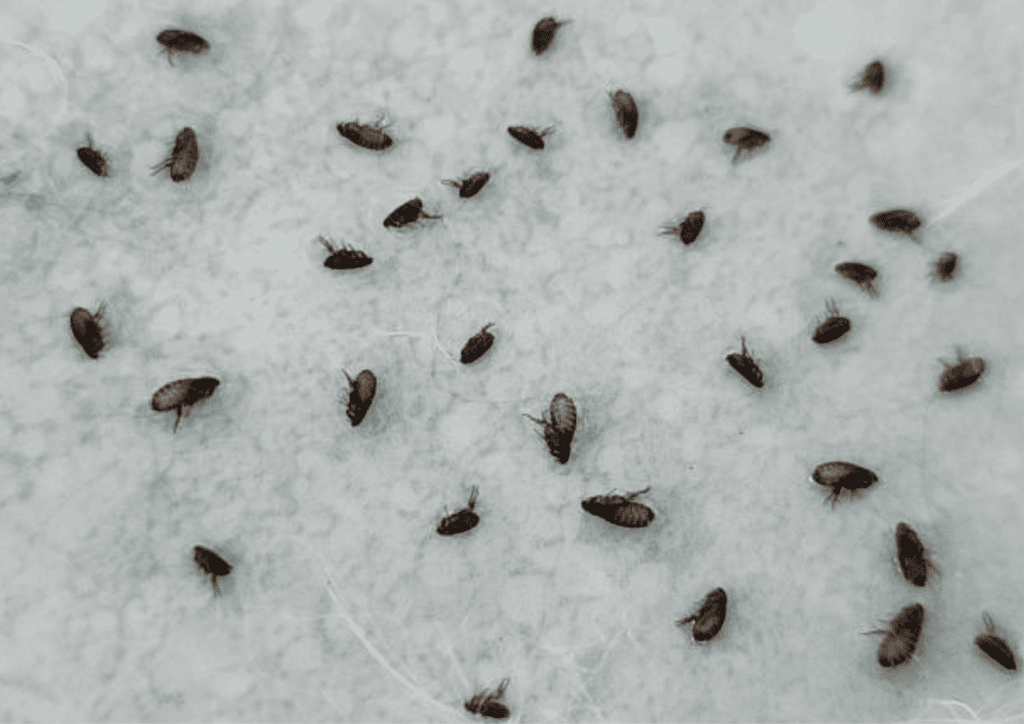
How does boric acid affect the exoskeletons and stomachs of fleas?

Boric acid damages the flea’s exoskeleton by abrading its protective outer layer, making it vulnerable to dehydration. When the flea ingests the boric acid during self-grooming, it targets the flea’s stomach, disrupting its digestive system. This disruption interferes with the flea’s ability to process nutrients and water, ultimately leading to starvation and dehydration.
Can you mix boric acid with water to enhance its flea-killing potential?

While boric acid is soluble in water, mixing it with water for flea control is not recommended. The potency of boric acid as a flea killer comes from its dry, powdery form, which clings to the flea’s exoskeleton. When mixed with water, boric acid loses its desiccating properties, diminishing its overall effectiveness against fleas.
How is boric acid used in flea control?
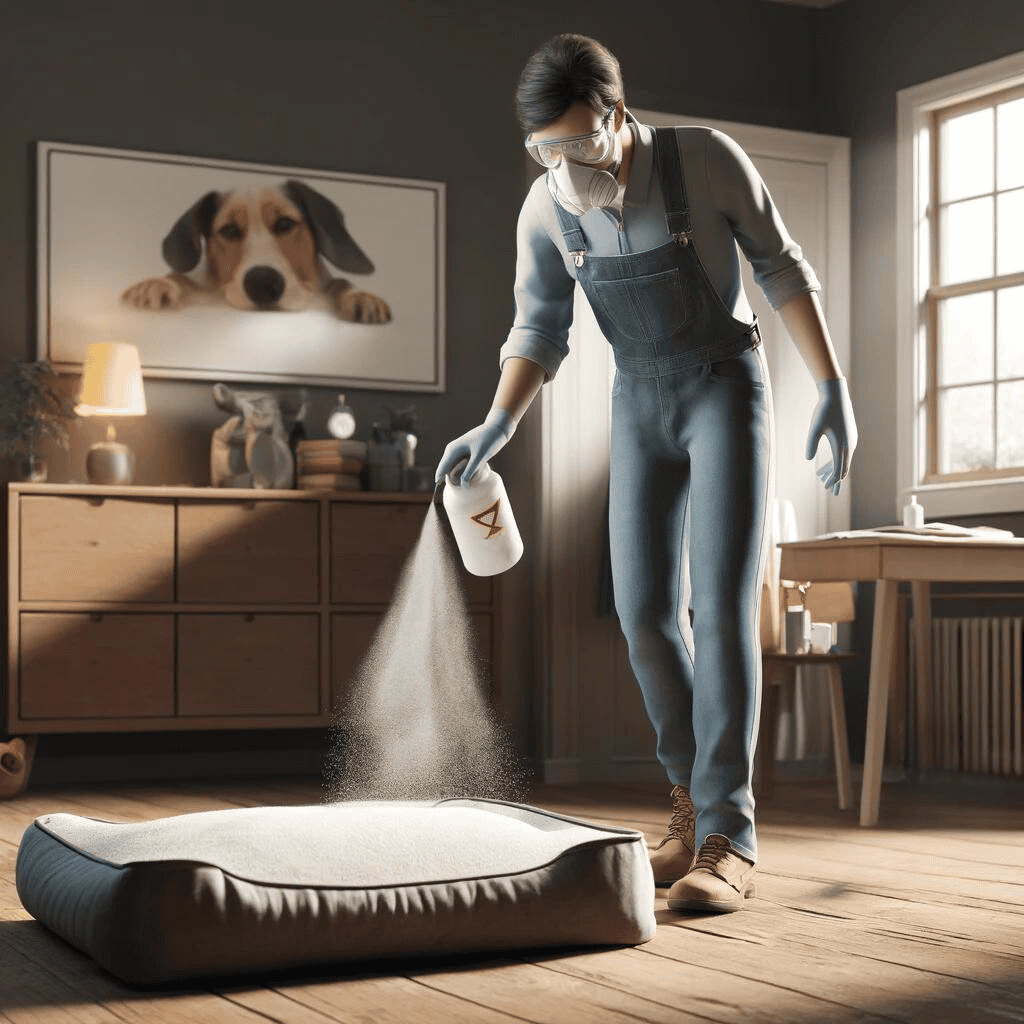
The application of boric acid for flea control is a methodical process that ensures maximum effectiveness while minimizing risks to pets and humans. Below is a step-by-step guide outlined in a table format, detailing each stage of the application process to eradicate fleas from your home efficiently.
| Step | Action | Tools Needed | Safety Precautions |
|---|---|---|---|
| Preparation | Identify affected areas such as carpets, pet bedding, and upholstery. | None | Wear protective gloves and mask. |
| Application | Lightly dust the affected areas with a thin layer of boric acid powder. | Dust mask, gloves | Ensure the area is well-ventilated to avoid inhalation. |
| Settling | Allow the powder to settle and remain on surfaces for 24-48 hours. | None | Keep pets and children away from treated areas during this period. |
| Cleanup | Thoroughly vacuum or wipe up excess powder from all treated areas. | Vacuum cleaner, damp cloth | Wear gloves and mask to prevent contact or inhalation of residual powder. |
| Repeat | If necessary, repeat the process to ensure all life stages of the fleas are eliminated. | None | Follow the same safety precautions for each application. |
Additional treatments may be necessary to eradicate the complete flea life cycle.
The Use of Boric Acid for Flea Infestations in Different Environments
Boric acid’s versatility makes it an effective remedy for flea infestations across various environments within the home. The table below outlines how to apply boric acid in different settings, such as carpets, pet bedding, and upholstery, ensuring that each area is treated effectively for flea control.
| Environment | Application Method | Considerations |
|---|---|---|
| Carpets | Dust lightly, ensuring the powder penetrates the fibers. Leave for 24-48 hours before vacuuming. | Work the powder deep into the carpet to reach fleas hidden below the surface. |
| Pet Bedding | Apply a thin layer, work into the fabric, and leave to settle. Wash bedding after vacuuming the powder. | Use only on washable items to completely remove the residue after treatment. |
| Upholstery | Light dusting, focusing on crevices and under cushions. Vacuum thoroughly after the waiting period. | Test on an inconspicuous area first to ensure it doesn’t damage the fabric. |
| Baseboards | Apply along edges and in corners where fleas are likely to travel or hide. | A brush can help work the powder into cracks and crevices. |
Can boric acid be used for fleas in carpets?
Yes, boric acid is an effective treatment for flea infestations in carpets. Due to its powder form, it can easily penetrate carpet fibers, reaching fleas hiding deep within. Apply a light layer of boric acid to the carpet, making sure to work it into the fibers, and let it sit for 24-48 hours before vacuuming. As mentioned earlier, this process may need repetition to ensure all life stages of the fleas are eliminated.
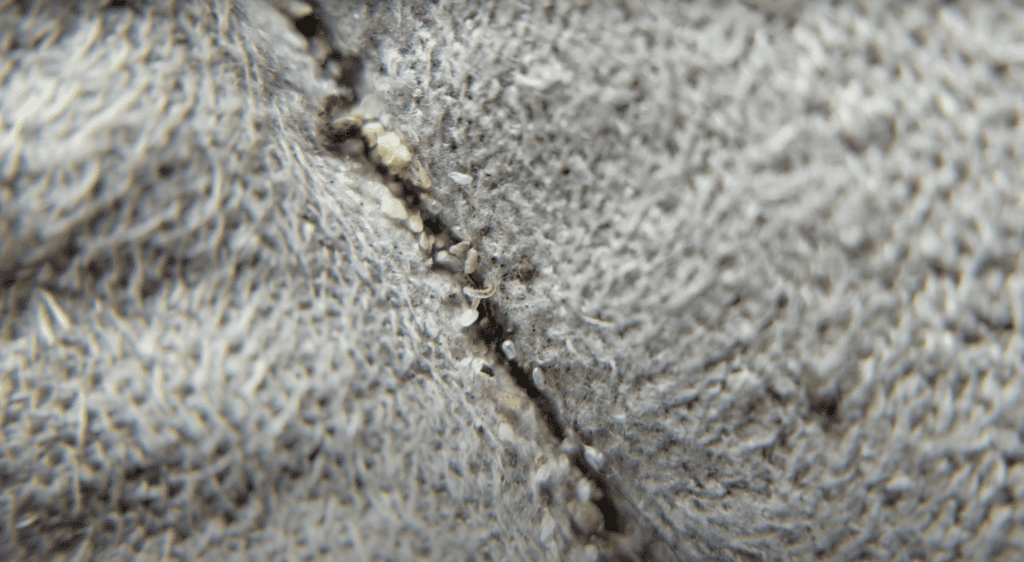
How can boric acid powder be utilized to treat flea infestations?

Boric acid powder can be used not only on carpets but other areas frequented by your pets, such as pet bedding, upholstery, and baseboards. The general application process remains the same: distribute a thin layer of boric acid powder in affected areas, work it into the fibers or cracks, and let it sit before vacuuming or wiping up the excess. Ensure that treated surfaces are dry, as moisture reduces boric acid’s effectiveness.
The Application of Boric Acid on Pets

Can boric acid be safely applied on dogs or cats to treat fleas?
It is not recommended to apply boric acid directly to your pets. While boric acid’s toxicity is considered low for animals, direct application can cause skin irritation or other complications if ingested during self-grooming. Choose a vet-approved flea treatment specifically designed for pets as a safer alternative.
How to properly use boric acid around pets?
When using boric acid to treat fleas in your home, take precautions to ensure your pets do not come into direct contact with the powder. Keep pets away from treated areas while the powder is settling, and make sure to thoroughly vacuum or wipe away any excess boric acid after the recommended waiting period. Additionally, store the boric acid container safely out of reach from pets and children.
Boric Acid and its Safety Concerns for Pets
Is boric acid safe for pets?
Boric acid is generally considered safe for pets when used as directed and following proper precautions. However, excessive ingestion or chronic exposure may cause health issues, such as gastrointestinal upset, lethargy, and even kidney damage. Always follow safety guidelines and monitor your pets for any signs of toxicity when using boric acid for flea control.
What are the potential dangers of boric acid to pets, specifically to dogs and cats?
Ingesting large amounts of boric acid can lead to:
- Vomiting
- Diarrhea
- Loss of appetite
- Weakness
- Seizures
If you suspect your pet has ingested a significant amount of boric acid, contact your veterinarian immediately and look for signs of toxicity.
Are there precautions to take when using boric acid around pets?
- Apply a thin, even layer of boric acid to minimize the risk of ingestion
- Keep pets away from treated areas until the boric acid has settled and excess has been vacuumed or wiped up
- Store boric acid containers securely where pets and children cannot reach
- Regularly monitor your pets for any signs of toxicity or adverse reactions
Boric Acid and Human Safety
Is boric acid safe for both pets and humans?
Boric acid is considered safe for both humans and pets when used appropriately. However, it can cause mild irritation to the skin, eyes, and respiratory system if inhaled or touched in large amounts. Wear gloves and a mask during application, and wash your hands thoroughly after handling boric acid. Ingesting boric acid can be toxic, so keep it away from children and avoid using it on surfaces where food is prepared.
Where to Purchase Boric Acid for Flea Control
Where can one buy boric acid for the purpose of killing fleas?

Boric acid can be easily purchased through various channels for flea control. Some common sources include:
- Online retailers, such as Amazon or eBay
- Home improvement stores, like Home Depot or Lowe’s
- Local hardware stores
- Garden centers or nurseries
- Pest control stores or websites
When buying boric acid, ensure that you purchase a product specifically designed for pest control purposes. Some boric acid products are formulated for other uses and may not be effective or safe for flea control. Always follow the manufacturer’s directions and safety guidelines for the best results.
Conclusion: Balancing the Use of Boric Acid for Flea Control with Pet Safety
How to effectively and safely use boric acid for flea control?
Balancing the effectiveness of boric acid in controlling flea populations with the safety of pets is crucial for responsible pet owners. The table below outlines essential guidelines for using boric acid without compromising the health and well-being of your furry friends.
| Guideline | Description |
|---|---|
| Apply a thin, even layer | Ensures maximum efficiency with minimal risk of pets coming into contact with large quantities. |
| Avoid direct application on pets | Prevents skin irritation and potential ingestion during grooming. |
| Keep pets away during treatment | Reduces the risk of inhalation or accidental ingestion of boric acid powder. |
| Work powder into fibers or cracks | Enhances effectiveness while limiting surface residue that pets might contact. |
| Wait 24-48 hours before cleanup | Allows the boric acid to act on fleas while ensuring areas are safe for pets to return. |
| Thoroughly vacuum or wipe treated areas | Removes residual boric acid, reducing the chance of pet exposure. |
| Store boric acid safely out of reach | Prevents accidental ingestion by pets or children. |
| Monitor pets for signs of toxicity | Early detection of adverse reactions can lead to prompt treatment. |
| Use vet-approved flea treatments on pets | Complements boric acid use in the environment with direct, safe treatments for your pet. |
| Repeat process if necessary, following safety guidelines | Ensures complete flea eradication with ongoing attention to pet safety. |
By using boric acid properly and responsibly, you can efficiently combat flea infestations while minimizing risks to your pets. Remember to combine boric acid with approved flea treatments designed for pets to ensure complete protection and control of fleas in your home. Regularly inspect your pets and home for signs of infestation and take action as soon as possible if fleas are detected to keep your pets healthy and your home flea-free.

